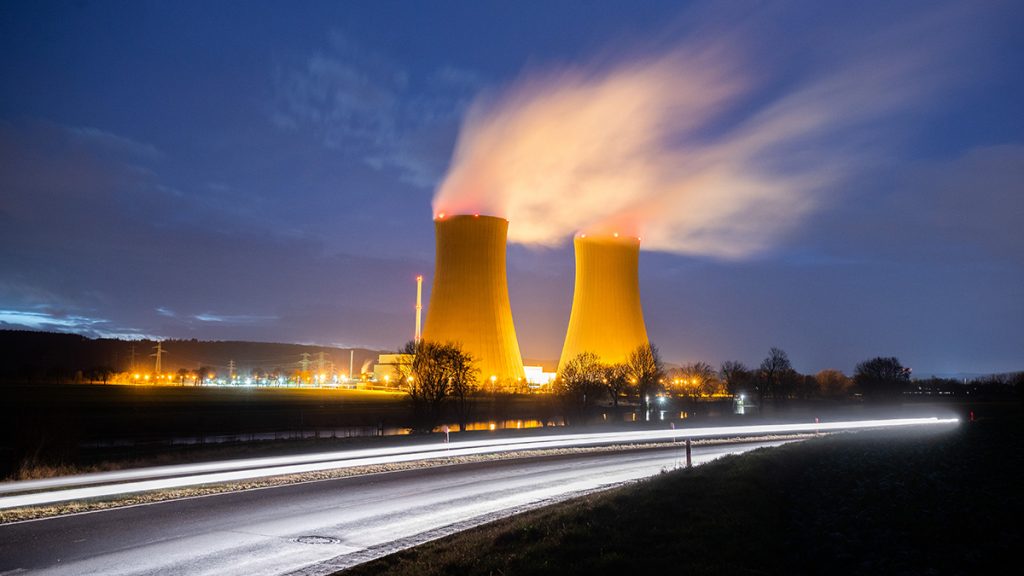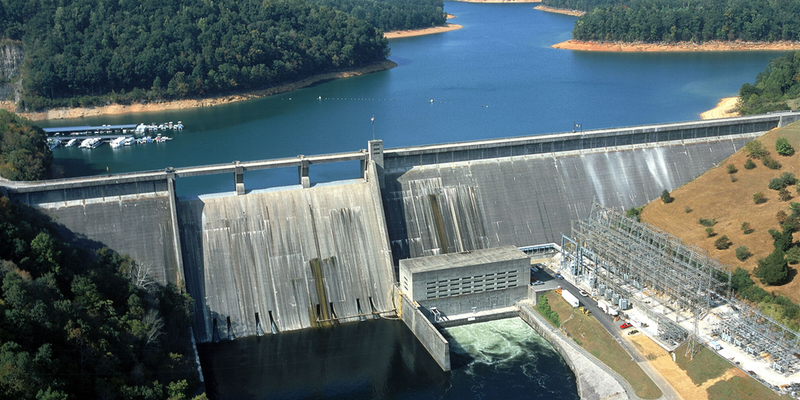Electricity generation is the process of converting various types of energy into electrical energy at industrial facilities called power plants.
Classification
Thermal power engineering
Thermal energy from the combustion of organic fuels is converted into electrical energy at thermal energy facilities. Thermal power plants (TPPs) are objects of thermal power generation, which are of two main types:
Condensing (KES, also, in the past the outdated abbreviation DRES was used – state district power plant). A thermal power plant designed exclusively for the production of electrical energy is called a condensing power plant. At the KES, the heat received during fuel combustion is transferred to the steam generators of water vapor, which enters the condensing turbine. The internal energy of the steam is transformed in the turbine into mechanical energy, and then by the electric generator into electric current, which is fed into the electric network. The spent steam is diverted to the condenser, from where the steam condensate is pumped by pumps back to the steam generator. Heating (heat and power plants, CHP). A thermal power plant with the combined production of electrical and thermal energy at the same plant is called a cogeneration plant. The combined production of heat and electricity at CHPPs significantly increases the efficiency of fuel use compared to the separate production of electricity at condensing power plants and heat at boiler plants KES and CHP have similar technological processes. The fundamental difference between CHP and CHP is that part of the steam heated in the boiler is used for heat supply needs.

Nuclear energy
Nuclear energy is a branch of energy that uses nuclear energy for electrification and heating. Nuclear energy includes nuclear power plants (NPP). In practice, nuclear power is often considered a subspecies of thermal power, since, in general, the principle of power generation at nuclear power plants is the same as at TPPs. Only in this case, thermal energy is released not during the burning of fuel, but during the fission of atomic nuclei in a nuclear reactor. Further, the electricity generation scheme is fundamentally no different from TPP: the steam receives heat from the reactor, enters the steam turbine, etc. Due to some structural features of the NPP, it is unprofitable to use it for combined generation, although separate experiments in this direction were conducted.
Hydropower
Hydropower is a branch of renewable energy that specializes in the use of energy from the flow of water. Hydroelectric power plants (HPP) belong to this industry. In hydropower, the kinetic energy of water flow is converted into electrical energy. For this, with the help of dams on rivers, a difference in water surface levels (upper and lower bief) is artificially created. Under the influence of gravity, water flows from the upper bief to the lower through special water pipes, in which water turbines are located, the blades of which are spun by the water flow. The turbine rotates the rotor of the electric generator. A special type of hydroelectric power station is hydroaccumulation stations (HAPS). They cannot be considered generating capacities in their pure form, since they consume almost as much electricity as they produce, but such stations cope very effectively with unloading the network during peak hours.

Alternative electricity
Alternative power generation includes methods of power generation that have a number of advantages compared to the “traditional” ones (mentioned above), but for various reasons have not been sufficiently widespread. The main types of alternative energy are:
Wind energy is the use of the kinetic energy of the wind to generate electricity.
Solar energy (helioenergy) — obtaining electrical energy from the energy of the sun’s rays.
The general disadvantages of wind and solar energy are the relatively small capacity of generators at their high cost. Also, in both cases, storage capacity is required for night (for solar energy) and windless (for wind energy) time.
Geothermal energy — industrial production of energy, in particular electricity, from hot springs, thermal underground waters. In fact, geothermal stations are ordinary TPPs, where instead of a boiler or a nuclear reactor, underground heat sources from the Earth’s interior are used as a heat source for heating steam. The disadvantage of such stations is the geographical limitation of their application: geothermal stations are cost-effective to build only in regions of tectonic activity, that is, where these natural sources of heat are the most accessible.
Hydrogen energy – the use of hydrogen as an energy fuel has great prospects: hydrogen has a very high combustion efficiency, its resource is practically unlimited, hydrogen combustion is absolutely environmentally friendly (the product of combustion in an oxygen atmosphere is distilled water). However, hydrogen energy cannot fully satisfy the needs of humanity so far due to the high cost of producing pure hydrogen and the technical problems of transporting it in large quantities.
It is also worth noting the following alternative types of hydropower: tidal and wave power. In these cases, the natural kinetic energy of sea tides and wind waves is used, respectively. The spread of these types of power generation is hindered by the need for the coincidence of many factors in the design of a power plant: such a coast is necessary, on which the tides (and the waves of the sea, respectively) would be sufficiently strong and constant.
